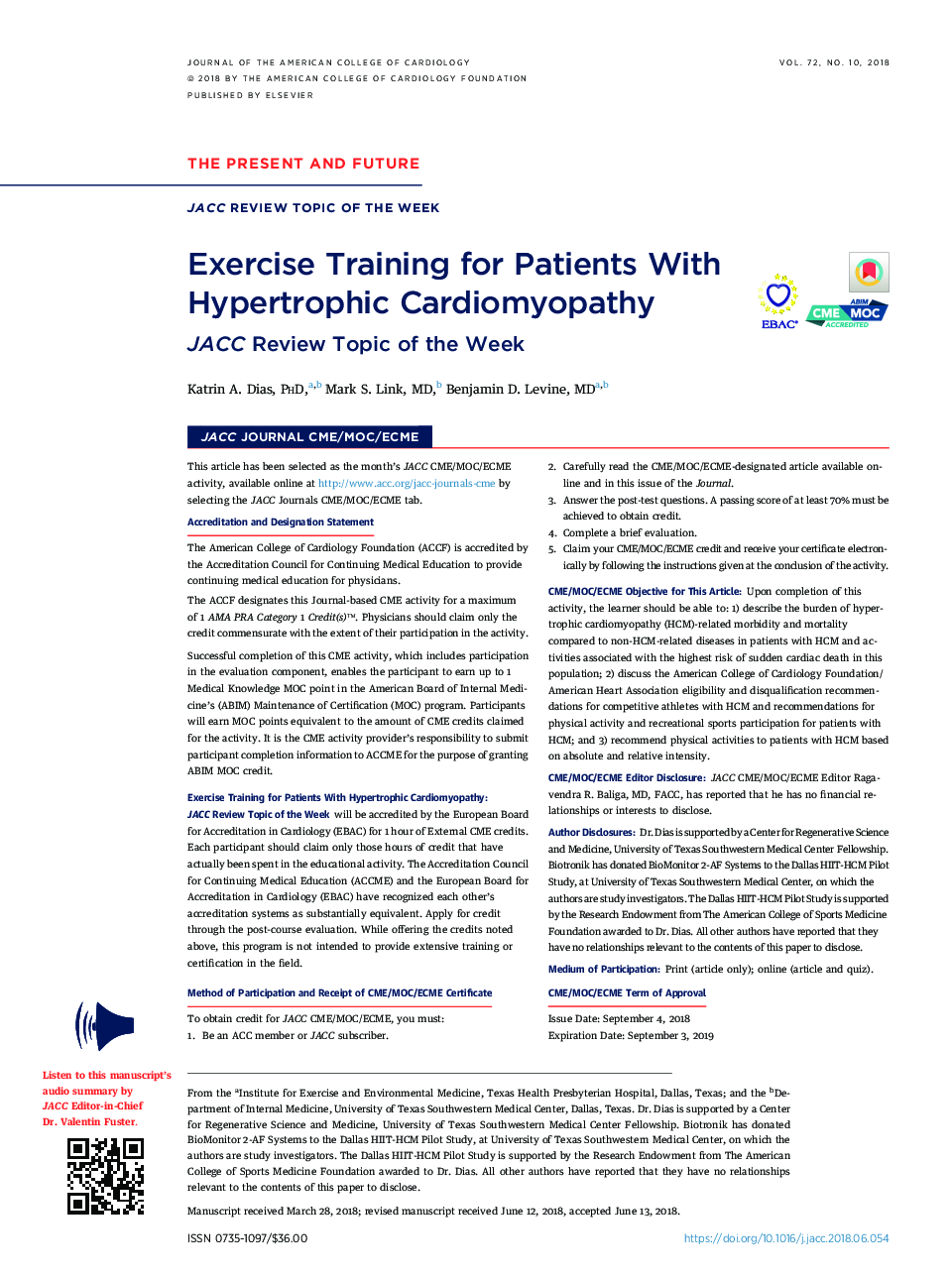| Article ID | Journal | Published Year | Pages | File Type |
|---|---|---|---|---|
| 8957181 | Journal of the American College of Cardiology | 2018 | 9 Pages |
Abstract
Current guidelines recommend that patients with hypertrophic cardiomyopathy (HCM) not partake in high-intensity exercise due to the increased risk of sudden cardiac death. But individuals with genetic cardiomyopathies are not immune from cardiometabolic diseases, and inactivity is common in patients with HCM, likely due to fear of exercise-induced adverse events. The RESET-HCM trial (Study of Exercise Training in Hypertrophic Cardiomyopathy) illustrated that although moderate-intensity exercise may be safe in this population, the increase in cardiorespiratory fitness achieved with this training paradigm is modest. High-intensity exercise is an efficacious stimulus for increasing cardiorespiratory fitness in chronic disease populations. Such increases in fitness are associated with substantial reductions in cardiovascular mortality and may outweigh the theoretical risks associated with exercise in patients with HCM. The goal of this review is to examine the evidence supporting the safety and efficacy of different intensities of exercise training in HCM, and consider novel strategies to improve fitness.
Keywords
V˙O2peakExercise guidelinesHIEHCMModerate-intensity exerciseMIEV˙O2maxHIITArrhythmiaCardiorespiratory fitnessHigh-intensity interval trainingPeak oxygen uptakeMaximal oxygen uptakeICDMetabolic Equivalent of TaskSudden cardiac deathMETHigh-intensity exerciseHypertrophic cardiomyopathyImplantable cardioverter-defibrillator
Related Topics
Health Sciences
Medicine and Dentistry
Cardiology and Cardiovascular Medicine
Authors
Katrin A. PhD, Mark S. MD, Benjamin D. MD,
